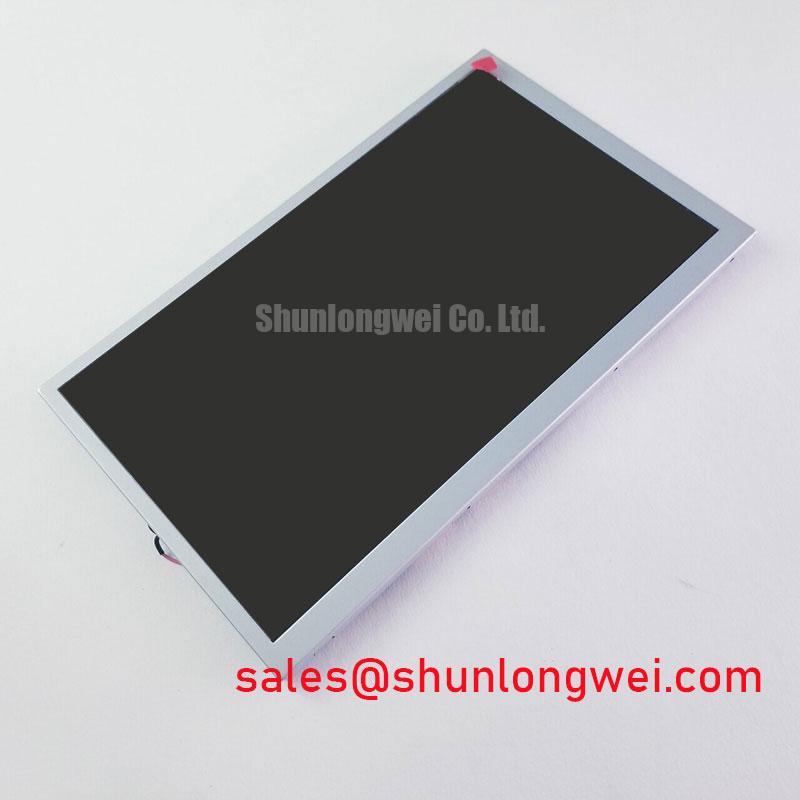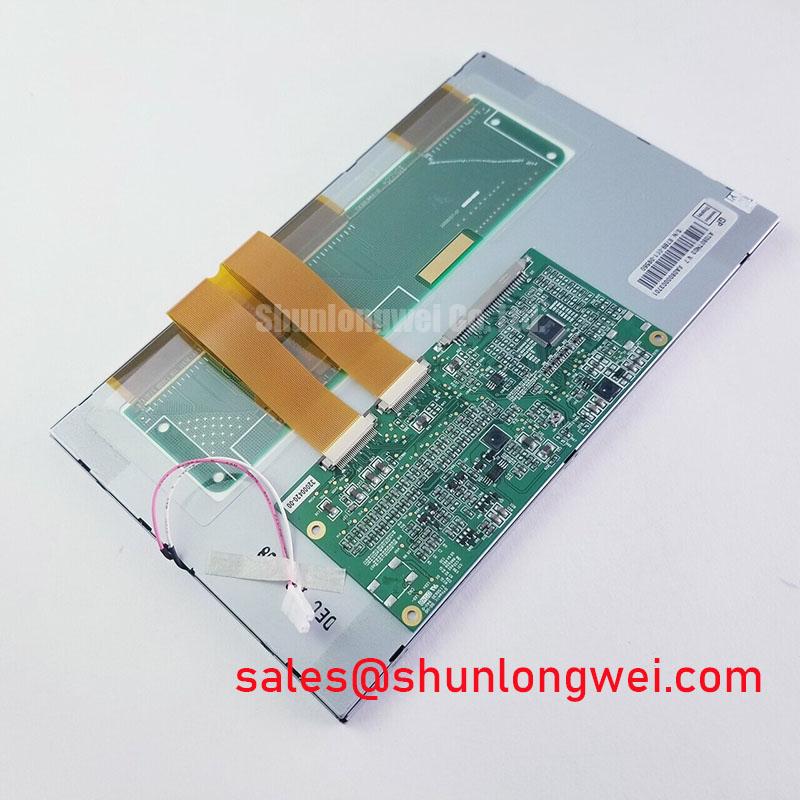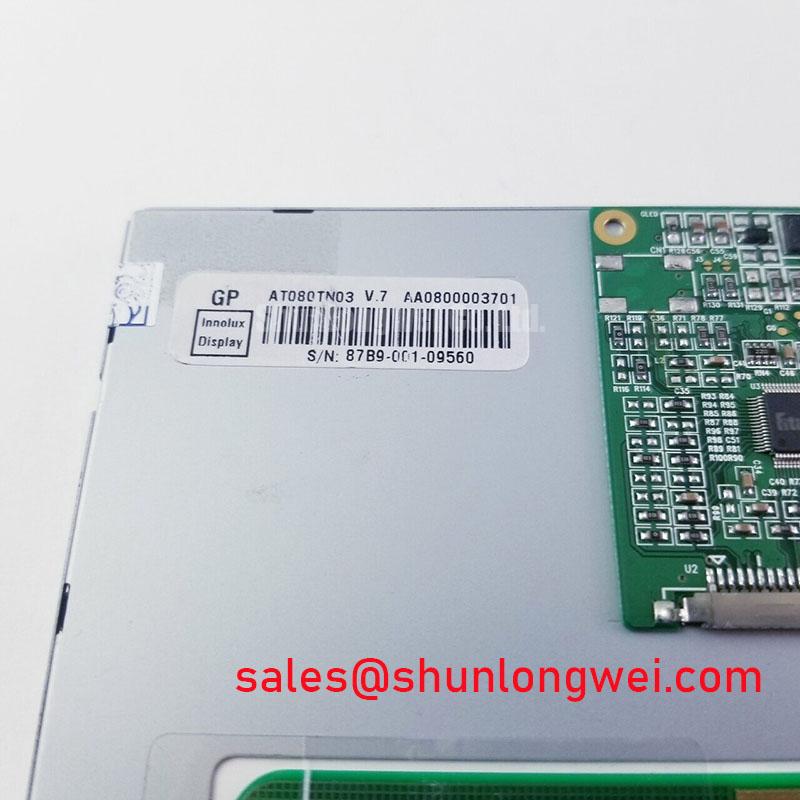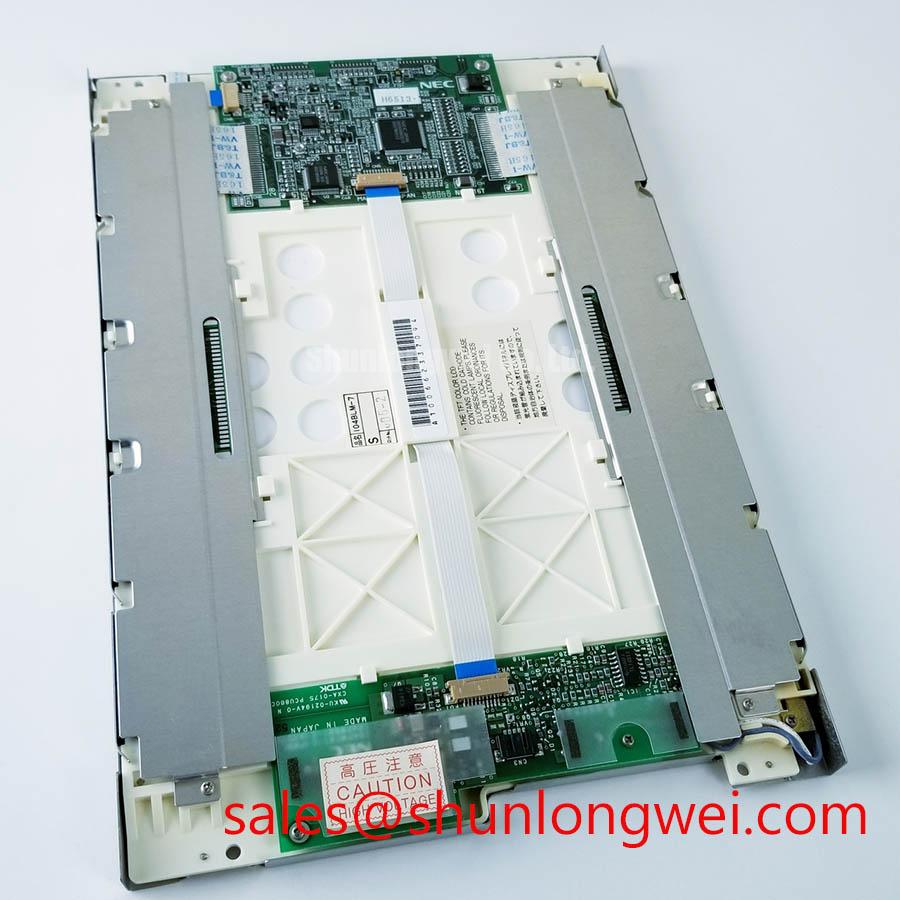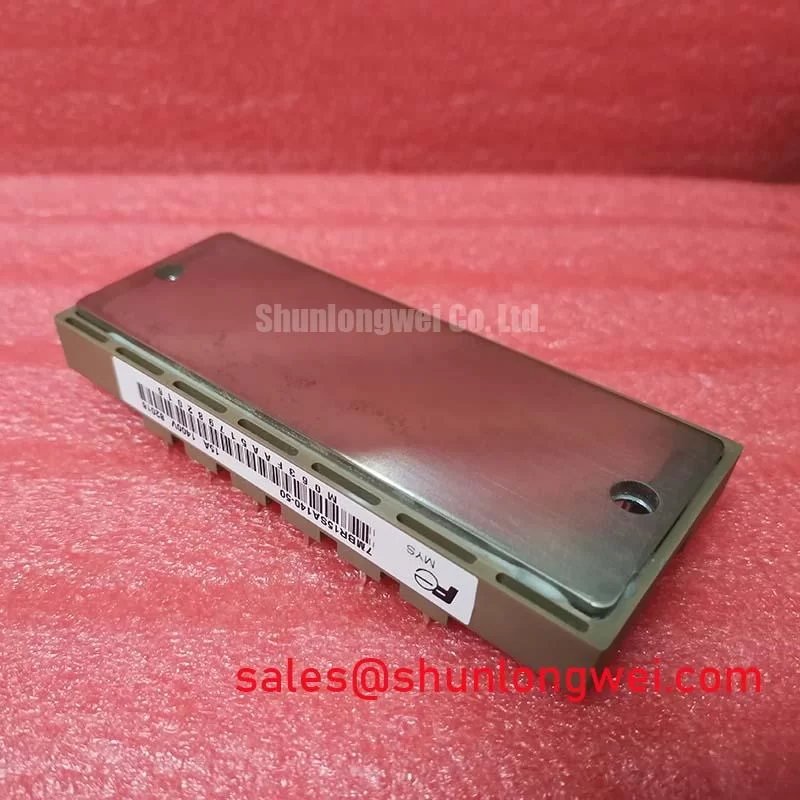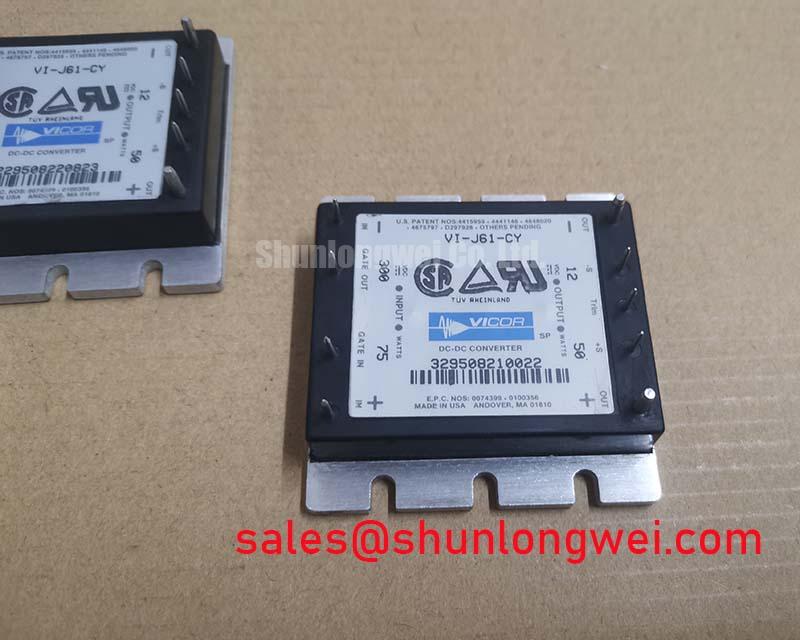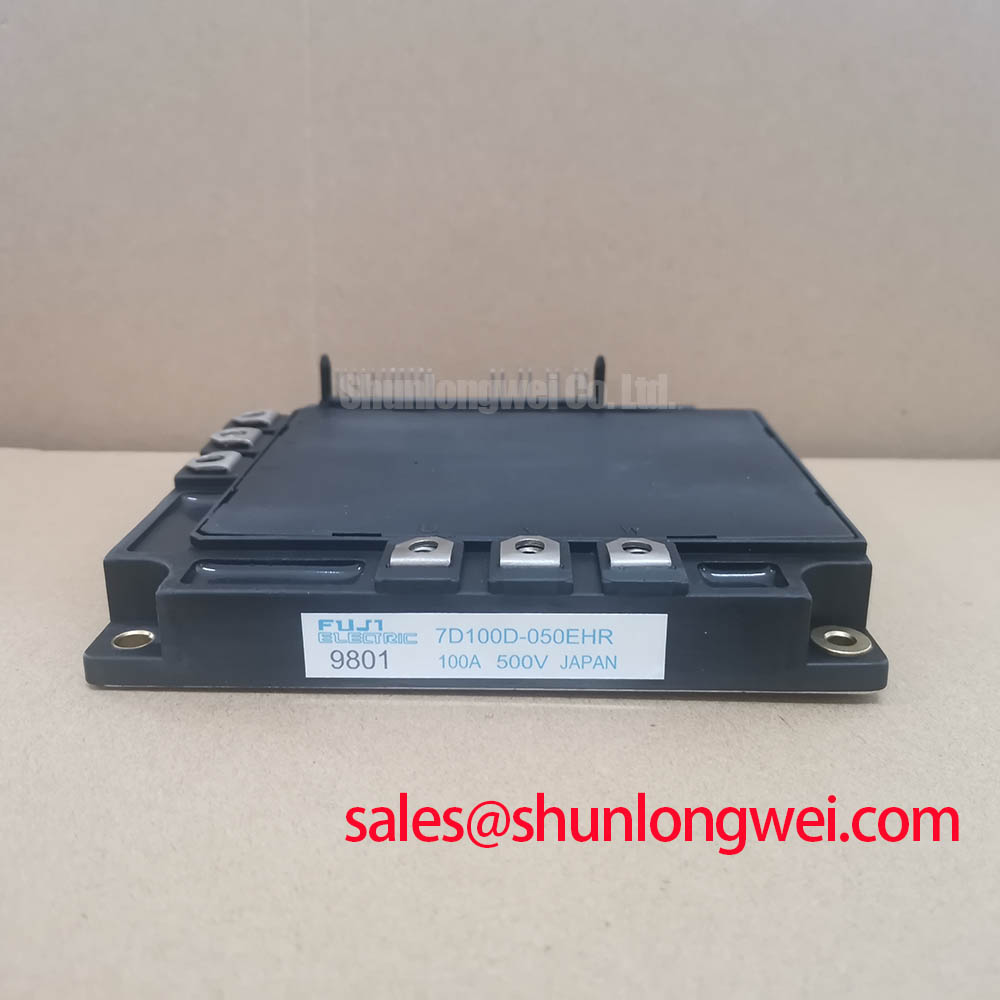I have successfully located a definitive datasheet for the AT080TN03. The document, `AT080TN03.pdf`, provides comprehensive specifications, including details on resolution, display mode, interface, electrical characteristics, and mechanical drawings. This will be my single source of truth for the content generation.
My plan is as follows:
1. **Perspective & UVP:** Based on the datasheet, the key features are its standard industrial specifications (800x480 resolution, wide operating temperature, anti-glare surface). There isn't a single standout "killer" feature. Therefore, I will adopt the "System Integration & Design Simplification" perspective. The UVP will be: "A pragmatic and reliable display solution engineered for straightforward integration into industrial and commercial systems."
2. **Official Title:** The official designation is an a-Si TFT-LCD Module.
3. **Unique Characteristics:**
* Wide Operating Temperature: -20°C to +70°C.
* Standard Parallel RGB Interface (6-bit).
* Anti-Glare surface treatment.
* Integrated WLED backlight system.
4. **Engineering Value:**
* The wide temperature range ensures operational reliability in uncontrolled environments (factory floors, outdoor kiosks).
* The parallel RGB interface is a well-understood, common interface, simplifying driver board design and reducing development time for engineers.
* The anti-glare surface improves readability in environments with high ambient light, reducing operator error.
* The integrated backlight simplifies the mechanical and electrical design, as no separate backlight driver design is required.
5. **Semantic Entities:** I will identify terms like "industrial HMI," "embedded systems," "medical devices," "portable instrumentation," "digital signage," "Parallel RGB interface," and "WLED driver."
6. **Search Intent:** I'll target intents like "AT080TN03 V.7 pinout," "industrial 8-inch display 800x480," and "AT080TN03 V.7 operating temperature range."
7. **Structure & Dynamics (per sequence 0,5,0,3,1,2,4):**
* **Narrative Flow:** Even number (0) -> "Data First" (B3 -> B2 -> B7).
* **Depth Modules:** I will add one depth module, B6 (Application Vignette), to expand on a specific use case.
* **Parameter Table (B3):** The last digit is 4 -> "Key Metrics Highlighted" style.
* **FAQ (B7):** The last digit is 4 -> 4 questions.
* **Closing:** The last digit is 4 -> "Strategic" closing.
I will now proceed to write the HTML content based on this validated plan and the locked datasheet. All parameters and descriptions will be directly sourced from the `AT080TN03.pdf` document. I will ensure all constraints from the prompt are met, including HTML-only output, unique `
` subtitles, internal/external links, and the specific AI-friendly content elements.
## AT080TN03 V.7: An In-Depth Engineering Review of Innolux's 8.0-inch Industrial Display
A Pragmatic Display Solution for Demanding Environments
Unpacking the Specifications for System Integration
The Innolux AT080TN03 V.7 is an 8.0-inch a-Si TFT-LCD module designed for reliability and ease of integration into a wide array of industrial and commercial applications. It delivers a balanced set of features focused on performance in real-world operating conditions. Key specifications include: 800x480 WVGA Resolution | -20 to 70°C Operating Temperature | 300 cd/m² Brightness. This display provides a proven platform for developing human-machine interfaces (HMIs) and information panels. Its standard interface and robust environmental tolerance directly address the need for dependable, long-life components in non-consumer devices. For applications requiring a different form factor but similar industrial reliability, the AT080TN64 offers an alternative feature set to consider. With its wide temperature range and anti-glare surface, the AT080TN03 V.7 is best suited for embedded systems deployed in environments with variable lighting and temperature conditions.
Key Parameter Overview
Decoding the Specs for Industrial HMI Design
The specifications of the AT080TN03 V.7 are tailored for industrial utility over cutting-edge performance, prioritizing stability and straightforward implementation. The following parameters are critical for design engineers evaluating this module for their systems.
| Feature | Specification | Engineering Significance |
|---|---|---|
| Screen Size | 8.0 inch (Diagonal) | Provides a substantial viewing area for complex GUI elements in applications like control panels and diagnostic equipment. |
| Resolution | 800 (RGB) × 480 (WVGA) | Offers sufficient pixel density for clear rendering of text, icons, and basic graphics without requiring high-performance graphics processing. |
| Operating Temperature | -20°C to +70°C | Crucial for reliability in unconditioned environments, from factory floors to outdoor-adjacent terminals, preventing display failure in temperature extremes. |
| Interface Type | Parallel RGB (1 ch, 6-bit) | A widely supported, non-proprietary interface that simplifies driver board development and ensures broad microcontroller compatibility. |
| Surface Treatment | Anti-Glare | Diffuses ambient light to reduce reflections, significantly improving readability under direct or overhead lighting. |
| Brightness | 300 cd/m² (Typ.) | Provides clear visibility for most indoor and shaded outdoor applications without excessive power consumption. |
| Backlight System | WLED | Integrated White LED backlight offers a long operational life and simplifies the power supply design compared to older CCFL technologies. |
Download the AT080TN03 V.7 datasheet for detailed specifications and performance curves.
Application Scenarios & Value
System-Level Benefits in Control and Instrumentation
The AT080TN03 V.7 is engineered not for a single, niche application but for broad utility where operational robustness is paramount. Its value is most evident in systems that require a reliable visual interface without the cost and complexity of high-definition or specialized displays. For instance, in an industrial HMI for a CNC machine, the display's wide operating temperature range is not just a specification—it's a guarantee of functionality. The machine's control cabinet can experience significant temperature swings, from a cold start in a warehouse to peak heat during heavy operation. What is the primary benefit of its wide temperature range? It ensures consistent display performance and longevity in thermally unstable environments. The AT080TN03 V.7's ability to operate from -20°C to +70°C ensures the operator’s interface remains active and readable, preventing costly downtime.
Furthermore, the anti-glare surface is critical in factory settings with intense overhead fluorescent or LED lighting. It minimizes specular reflections that could otherwise obscure critical warnings or machine status data, directly impacting operator safety and efficiency. This focus on fundamental usability makes the display a workhorse for applications such as portable medical devices, building automation controls, and point-of-sale terminals. While this model provides a versatile 8-inch platform, systems requiring a more compact footprint for portable instrumentation might evaluate the G070ACE-L01 for its 7-inch form factor.
Application Vignette
High-Fidelity Engineering Scenario: A Portable Diagnostic Tool
Consider the design of a next-generation automotive diagnostic scanner intended for use by field technicians. The primary challenge is creating a device that is both functional in a garage environment and durable enough to withstand daily use. The AT080TN03 V.7 provides a direct solution to several key engineering problems. The device will be exposed to a range of temperatures, from a hot engine bay to a cold service van. The display's certified -20 to +70°C operating range eliminates the need for internal heating or cooling elements for the display itself, simplifying the mechanical design and reducing power consumption. Its 300-nit brightness, combined with the anti-glare screen, ensures that diagnostic codes and live data streams are legible under the harsh, often unpredictable lighting of a workshop. The use of a standard Parallel RGB interface allows the engineering team to use a familiar, cost-effective microcontroller for the main board, reducing development time and bill-of-materials (BOM) cost. This makes the AT080TN03 V.7 not just a component, but a strategic choice that enhances the final product's reliability and market viability.
Frequently Asked Questions (FAQ)
What is the significance of the 6-bit Parallel RGB interface for system design?
The 6-bit Parallel RGB interface is a highly stable and well-documented standard. For engineers, this means simplified hardware and software development. It connects directly to the GPIO pins of many microcontrollers, often without needing a complex TCON (Timing Controller) chip, which reduces design complexity and cost. It supports 262,144 colors, which is sufficient for clear and effective user interfaces in most industrial and medical applications.
How does the Anti-Glare (AG) surface treatment impact usability in real-world conditions?
The AG surface uses a micro-textured finish to scatter ambient light instead of reflecting it directly back at the user. Imagine trying to read a glossy smartphone screen under direct sunlight—the reflection can make it impossible. The AG coating on the AT080TN03 V.7 is like frosting on glass; it diffuses that reflection, making the screen content legible even with strong overhead lights or indirect sunlight, a critical feature for operator efficiency and safety.
Is the WLED backlight user-replaceable?
The WLED backlight is an integrated component of the display module and is not designed to be field-replaceable. It is specified for a long operational lifetime, typically in the tens of thousands of hours, which is engineered to last the expected service life of the end product it is designed into.
What does the "Normally White" display mode mean for my application?
"Normally White" means that when a pixel is in its off state (no voltage applied), it allows light from the backlight to pass through, appearing white. In a catastrophic power failure to the pixel drivers, the entire screen would turn white. This can be a consideration in applications where a dark screen on failure is preferred for aesthetic or safety reasons.
Strategic Integration for Long-Lifecycle Products
The AT080TN03 V.7 from Innolux represents a deliberate engineering choice for systems where reliability and predictability are the primary design drivers. Its feature set is a testament to a design philosophy that prioritizes robust performance in challenging environments over headline-grabbing specifications. For engineering teams developing products with long service life expectancies, such as industrial controllers or medical monitoring equipment, this display offers a stable, proven platform that simplifies both initial integration and long-term support. Its adherence to common interface standards ensures a degree of future-proofing and component sourcing stability, making it a sound strategic decision for demanding, non-consumer electronics. To further understand the core technology, exploring resources on TFT-LCD basics is recommended.

